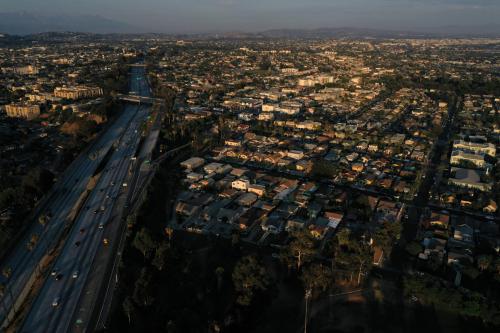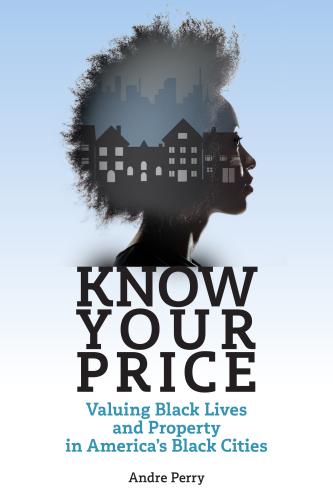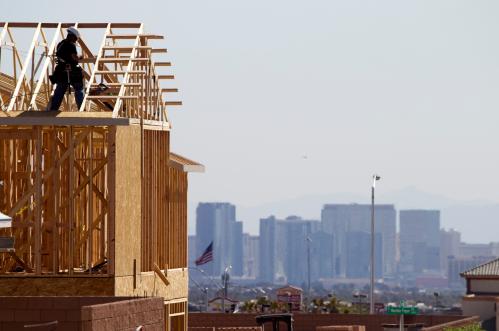In 2018, Brookings Metro published The devaluation of assets in Black neighborhoods, a report exposing significant inequities that are inherent in housing markets across the U.S. Our goal was to quantify the proverbial “Black tax” and potentially restore the value racism has extracted from Black Americans. We carefully designed our study to isolate the impact of race and racism on home values, and found that homes in Black-majority neighborhoods are undervalued by 23% on average (about $48,000) compared to similar homes in neighborhoods with few Black residents. Cumulatively, this undervaluation deprives homeowners in Black neighborhoods of approximately $156 billion in equity.
For some context, that $156 billion could have started 4.4 million Black-owned businesses, based on the average amount Black people use to start their firms. It could have paid for 8.1 million four-year college degrees, based on the average price of public universities in 2016. It is the cost of replacing all the water pipes in Flint, Mich. 3,000 times over, and would have nearly covered the cost of Hurricane Katrina’s damage.
Three years after the report’s publication, in 2021, Ashoka and the Brookings Institution partnered to launch an initiative to foster structural innovations that can address systemic racism in the housing market and enable homeowners in Black-majority neighborhoods to realize the value and appreciation of their assets. The effort pairs Brookings’s commitment to independent, data-driven analysis with Ashoka’s dedication to identifying and rallying support for systems-changing innovations with the potential to address society’s most pressing problems.
The Brookings-Ashoka Valuing Homes in Black Communities challenge does just that. We invited innovators from across the country to submit inspiring ideas for redesigning a more equitable housing market. A selection committee and panel of judges looked for changemakers who provided strong answers to a range of questions about what their initiative did, what connected them to the topic, and how their idea can bring about structural change. Participants included nonprofit and for-profit firm leaders, housing advocates, and entrepreneurs, who networked and provided peer feedback to one another. The innovations they submitted included new mortgage and appraisal products, novel ownership models, policy improvements, community organizing tools, and much more.
Since we released our housing report, there have been numerous news stories about Black homeowners “whitewashing” their homes—replacing Black art, books, clothing, and hair products with those that would signal that a white person lived in the house. In 2020, The New York Times reported on a Jacksonville, Fla. couple whose home yielded a 40% higher appraisal value after whitewashing it. That same year, an Indianapolis woman whitewashed her home and got a white stand-in. Her new appraisal came in $134,000 higher than an earlier one. Such biased appraisals show an intrinsic value in whiteness that is denied to Black homeowners.
Just as appraisers, bankers, mortgage brokers, real estate agents, and politicians constructed housing markets based on a belief of exclusivity, people can deconstruct this architecture of inequality and replace it with structures that are inclusive in nature. Past and present exclusionary policies and practices such as redlining, racial housing covenants, single-family zoning ordinances, and neighborhood-level price comparison approaches to valuation all impact today’s home values. Correcting housing markets will require initiatives that encourage inclusion rather than exclusion and seek restoration of the value racism has extracted.
The Biden administration has acknowledged Brookings’s devaluation research in various memoranda, and in June 2021, the president announced PAVE, an interagency task force to end bias in home valuations. This year, PAVE released its Action Plan to Advance Property Appraisal and Valuation Equity, which outlines actions to strengthen guardrails against discrimination, enhance fair housing and lending enforcement, build a diverse appraiser workforce, empower consumers, and give researchers and enforcement agencies more data.
The federal government’s regulation and enforcement functions in housing are critical in closing the valuation gap, but they are not sufficient by themselves. We need an agenda for future research and innovations that scale-up alternatives to traditional appraisals, create new unbiased valuation methods, and diversify the appraisal workforce—96.5% of whom are white.
The innovators in the Valuing Homes in Black Communities challenge are working on projects in these areas now—projects we can scale up to lawmakers in Washington. Just as we once built a market on exclusivity, today, we can construct an inclusive one. We selected innovators who are focused on inclusion, because their work could help change fundamental structures in the appraisal market. And today, we are happy to announce the Spotlight Innovators who will receive cash prizes to advance their ideas:
- Ashley Allen, Houston Community Land Trust (Houston)
- Roshun Austin, The Works, Inc. (Memphis, Tenn.)
- Bree Jones, Parity Baltimore Incorporated (Baltimore)
- Ericka Kelly, Greater Milwaukee Committee (Milwaukee)
- Santhosh Ramdoss, Gary Community Ventures (Denver)
- Scot Rose, Class Valuation (Troy, Mich.)
- Ellen Sahli, Family Housing Fund (Minneapolis)
- Charu Singh, Humane Works LLC (New York)
- Rosalind Williams, WITH ACTION (St. Louis)
- Evelyn Zwiebach, Enterprise Community Partners (Detroit)
We find ourselves in a rare moment in which researchers, government, corporations, and private citizens can dismantle the drags of racism from housing markets and build an architecture of equality. If we are thoughtful about how we redesign the market, we have the opportunity to engage appraisers, appraisal companies, financial institutions, and industry groups to address the structural causes of the valuation gap on each of these frontiers.








Commentary
Redesigning the housing market to build an architecture of equality
April 27, 2022